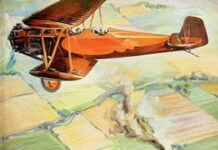Aircraft design took a sudden, almost unprecedented step forward in 1927. Sure, the customary procession of faster, more deadly military aircraft continued. But something else was in the air. The challenge of crossing the Atlantic Ocean, and traveling in luxury airliners to the four corners of the world beckoned.
Of course, this was only in its infancy, although Fokker and Farman were getting closer to daring to do it. Meanwhile Charles Lindbergh and Amelia Earhart were a step ahead. They crossed the Atlantic in their tiny airplanes on two separate flights. Europe and North America were about to connect fully, and the world would never be the same again.

https://www.christies.com/en/lot/lot-3852916
JANUARY 1927
Germany’s lead in civil aviation continues growing. It now flies more passengers, for greater distances than the airlines of France, Italy, and the United Kingdom combined.
The United Kingdom requires aircraft capable of carrying 10 or more people, including crew carry telegraphic equipment and have a special operator for it.
Imperial Airways introduces its first empire ‘trunk route’ connecting Basra, Iraq with Cairo via Baghdad.
Boeing Air Transport forms to carry airmail between Chicago and San Francisco. It eventually becomes United Airlines.
FEBRUARY 1927
Italian Royal Air Force pilots Francesco de Pinedo and Capitano Carlo Del Prete, accompanied by their mechanic Sergente Vitale Zacchetti depart Sardinia to commence their ‘Four Continents’ flight in the Savoia-Marchetti S.55 flying boat Santa Maria.
American Curtiss F7C Seahawk Dive Bomber / Fighter / Stunt Plane
The Curtiss F7C Seahawk was a carrier-capable aircraft in service with the United States Navy Marine Corps in the late 1920s and early 1930s. Its dive-bomber specification enabled tight turns and dives, and this made it a natural for the U.S. Navy’s Red Devils’ stunt team, although Curtiss only sold 17 aircraft.

https://en.wikipedia.org/wiki/File:Curtiss_XF7C-1_NACA_June_1929.jpg
The Curtiss F7C was the first aircraft designed expressly for the Navy, rather than a modified Army type. Therefore, although it was clearly a descendant of the P-1 Hawk, its wings were constant-chord rather than tapered, and the upper wing had a slight sweepback.
The fuselage structure was a combination of aluminum and steel tubing, providing sufficient strength for dive bombing as well as close-quarter fighting. While the wings were frames with spruce covered with fabric. In 1930, seven of the aircraft formed the Marines’ first aerobatic stunt team, The Red Devils suitably decorated with red noses. They served until 1933.
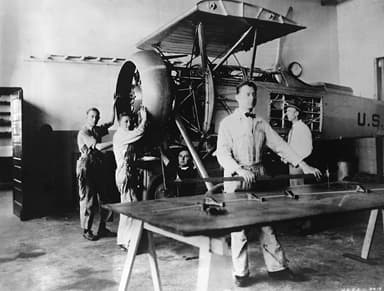
https://commons.wikimedia.org/wiki/File:Early_Test_Installations_for_Cowlings_-_GPN-2000-001394.jpg
The specification of the Curtiss F7C-1 was as follows:
- Length 22 ft, height 9.5 ft, wing span 30.5 ft, wing area 275 sq ft
- Empty weight 2,053 lb, gross weight 2,768 lb, crew one
- Pratt & Whitney R-1340B Wasp 9-cylinder radial piston engine, 450 hp
- Max 155 mph, cruise 150 mph, range 335 mi, ceiling 22,100 ft, climb 1,860 ft / min
- Two fixed 0.30 inch Browning machine guns in the forward fuselage

https://en.wikipedia.org/wiki/Pratt_%26_Whitney_R-1340_Wasp#/media/File:Pratt_and_Whitney_Wasp.jpg

https://commons.wikimedia.org/wiki/File:Curtiss_43_(F7C-1)_Seahawk,_Naval_Aviation_Museum,_Pensacola.jpg
MARCH 1927
American Airways is established to carry airmail on the Key West-Havana route.
John Rodgers Airport is dedicated in Honolulu, Territory of Hawaii. Belgrade International Airport opens in Belgrade in the Kingdom of Yugoslavia.
The ‘Four Continents’ flight arrives in New Orleans, Louisiana. The Savoia-Marchetti S.55 flying boat is the first foreign airplane ever to fly into the United States.
British Westland Wapiti General-Purpose Military Biplane
The Westland Wapiti first flew on March 3, 1927, as a potential replacement for the aging Airco DH.9A in Royal Air Force service. It proved a success, and some 585 were constructed, of which 27 were built under license in South Africa. It served in Iraq and India, and escorted Victoria troop carriers in the evacuation of Kabul
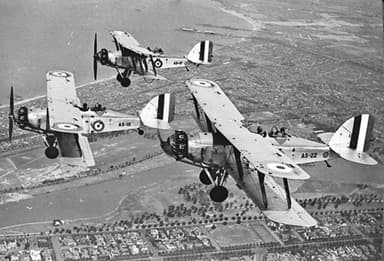
https://commons.wikimedia.org/wiki/File:Westland_A5_Wapiti_IA_%26_IIA_-_RAAF_-_Melbourne_circa_1930.jpg
The Royal Air Force specification called for extensive use of DH.9A components, as it still held large stores of DH.9A spares. The forward fuselage was a metal tube structure with aluminum-and-fabric covering, while the rear section was a fabric-covered wooden construction.
The wings and tail were wooden DH.9A components, although later models replaced the wooden parts with all-metal structures. The Wapiti performed well in peace time and military situations. In fact, survivors were still in service in 1942.
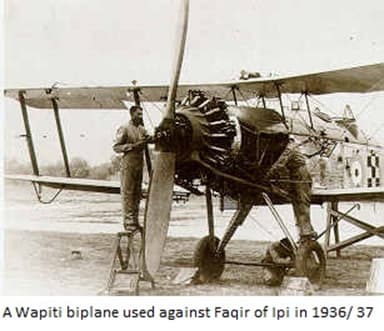
https://commons.wikimedia.org/wiki/File:Wapiti_ZBiplane_used_against_the_Faqir_of_Ipi_in_1937.jpg
The specification of the Westland Wapiti IIA was as follows:
- Length 31.5 ft, height 13 ft, wing span 46.5 ft, wing area 488 sq ft
- Empty weight 3,810 lb, gross weight 5,410 lb, crew two
- Bristol Jupiter VI 9-cylinder air-cooled radial piston engine, 420 hp
- Max 129 mph, cruise 110 mph, range 360 mi, ceiling 18,800 ft, climb 1,140 ft / min
- 0.303 inch forward Vickers gun, one Lewis gun in rear cockpit, 580 pounds of bombs
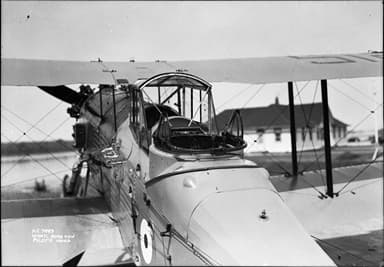
https://commons.wikimedia.org/wiki/File:RCAF_Westland_Wapiti_rear_view_pilot%27s_hood.jpg

https://commons.wikimedia.org/wiki/File:Westland_Wapiti_Delhi_Air_Museum.jpg
German Fokker F.VIII Twin Engine Passenger Airliner
Dutch KLM airline requested Fokker to design an airliner with greater capacity than their F.VII variants. While the Fokker F.VIII that resulted did not sell in large numbers, it omitted the engine-in-nose convention. This reduced prop-wash wear and tear on the fuselage, resulted in much lower vibration levels for passengers, and provided an example that other airliners would follow.

https://en.wikipedia.org/wiki/File:Fokker_F8_ABA.jpg
The Fokker F.VIII used a hybrid construction. The fuselage and tail section were welded steel covered with plywood, canvas and duralumin, but the wing framing was all wood covered with plywood. This Fokker trademark resulted in their characteristic cantilever high-wings.
The prototype completed trials on March 12, 1927. The standard offering accommodated 15 passengers seated three abreast. However, KLM opted for a more luxurious 12-seat arrangement, well received at the time.
Fokker experimented with in-wing-mounted engines during production, but this was dropped due to concerns with airflow over the upper wing.
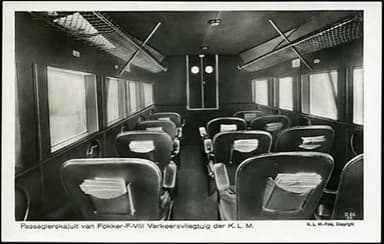
https://www.flickriver.com/photos/27862259@N02/5916906544/
The specification of the Jupiter-engined Fokker F.VIII was as follows:
- Length 55 ft, height 13 ft, wing span 75 ft, wing area 880 sq ft
- Empty weight 7,385 lb, max take-off 12,797 lb, crew two, passengers fifteen
- Two Bristol Jupiter IV 9-cyl air-cooled radial piston engines, 480 hp each
- Max speed 87 mph, cruise 73 mph, range 430 mi, ceiling 18,000 ft
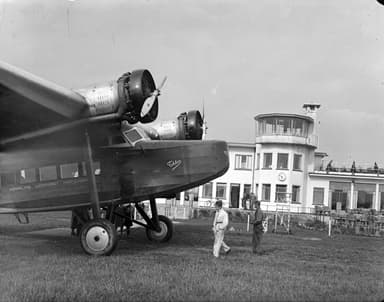
https://commons.wikimedia.org/wiki/File:Luchthaven_Eindhoven-_de_verkeerstoren_en_een_Fokker_van_de_KLM_-_Eindhoven_-_20385000_-_RCE.jpg

https://commons.wikimedia.org/wiki/File:Fokker_F.VIII.png
APRIL 1927
The ‘Four Continents’ Savoia-Marchetti S.55 Santa Maria flying boat catches fire on Theodore Roosevelt Lake in Arizona where it landed to refuel. The Italian government promises to ship a replacement aircraft so they can continue their journey.
Portuguese air crew Sarmento de Beires, Duvalle Portugal, Jorge de Castilho and Manuel Gouveia make the first night aerial crossing of the South Atlantic in a Dornier Do J Wal Argos. They arrive in Brazil from Portuguese New Guinea, after traveling 1,620 miles in 18 hours, 20 minutes.
American Ryan Spirit of St Louis Single Seat Monoplane
The Spirit of St Louis was a purpose-built aircraft specially manufactured for American aviator Charles Lindbergh’s Atlantic crossing by Ryan Airlines. However, it was loosely based on the company’s 1926 Ryan M-2 mail plane, the main difference being its 4,000-mile tank range. The company obtained an ‘experimental permit from the U.S. regulator to avoid delays.

https://en.wikipedia.org/wiki/File:Spirit_of_St._Louis.jpg
Charles Lindbergh concluded a single-engine design would give him greater range and therefore a greater prospect of success. He also specified one of the most advanced and aerodynamically streamlined designs of its era, to squeeze every possible mile out of the 450 U.S. gallon fuel tanks.
Other unusual modifications included a deliberately-uncomfortable wicket seat to keep him awake during the estimated 40-hour flight. There was no time to adjust the tail and wing assembly control surfaces to allow for the location of the extra fuel tank. Some say this was deliberate, because unexpected yawing, pitching and banking would require constant concentration.
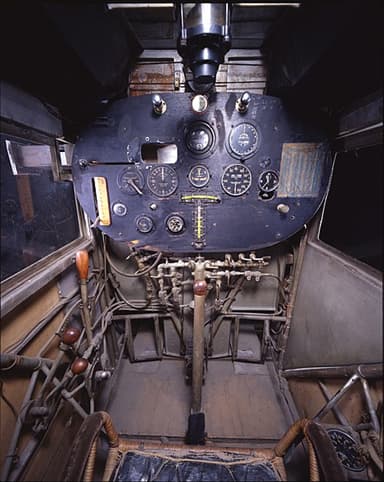
https://commons.wikimedia.org/wiki/File:Spirit_of_St._Louis_-_Cockpit.jpg
The specification of the Spirit of St Louis was as follows:
- Length 27.5 ft, height 9.5 ft, wing span 46 ft, wing area 320 sq ft
- Empty weight 2,150 lb, max take-off weight 5,135 lb, crew one
- Wright J-5C Whirlwind 9-cylinder air-cooled radial piston engine, 223 hp
- Max 133 mph, cruise 100-110 mph, range 4,100 mi, ceiling 16,400 ft
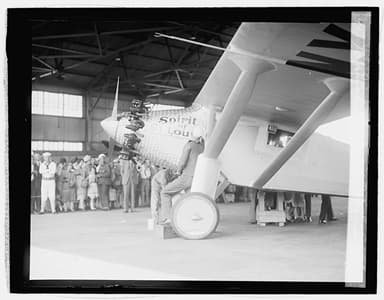
https://commons.wikimedia.org/wiki/File:Lindbergh_Spirit_of_St.Louis,_6-12-27_LCCN2016843107.jpg
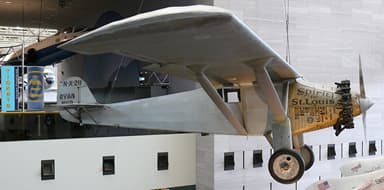
https://en.wikipedia.org/wiki/Spirit_of_St._Louis#/media/File:Spirit_Of_St_Louis2.jpg
MAY 1927
Imperial Airways introduces its luxury Silver Wing service between London and Paris using Armstrong Whitworth Argosy aircraft.
A crowd of 30,000 people greet Yugoslavian aeronautical engineer Tadija Sondermajer and pilot Leonid Bajdak, as they complete a 14-stage, 11-day, 9,191-mile flight from Paris via Bombay to Belgrade in a French biplane Potez XXV aircraft.
The first Brazilian airline Varig is founded. It begins flight operations the following month, using a Dornier Wal with a capacity of nine passengers.
Charles Lindbergh flies the Ryan monoplane Spirit of St. Louis solo and nonstop across the Atlantic from New York to Paris. He covers 3,610 miles, and qualifies for the Orteig Prize.
British Bristol Bulldog Single Seater Biplane Fighter Aircraft
The Bristol Bulldog was one of Britain’s most successful military aircraft in the late 1920s, and the manufacturer sold some 440 after the first flight on May 17, 1927. Australia, Denmark, Estonia, Finland, Japan, Latvia, Siam, Spain, United States and Sweden all purchased them for service or evaluation. However, the bulk went to the British Royal Air Force.

https://en.wikipedia.org/wiki/File:Bristol_Bulldog.1.jpg
The Bristol Bulldog Type 105 was an unequal span, single bay biplane powered by a supercharged radial engine driving a two-bladed propeller. The structure was all-metal with a fabric covering, using members built up from rolled high-tensile steel strips riveted together. A large semi-circular cut-out in the trailing edge of the upper wing ensured maximum field of view.
There were various modifications during production, including a lengthened fuselage. Other versions had revised wing spars and a stronger fuselage, powered by an uprated engine. The aircraft saw combat in foreign hands in the Spanish Civil War and the Finnish Winter War against the Soviet Union, although Britain retired hers in 1937.
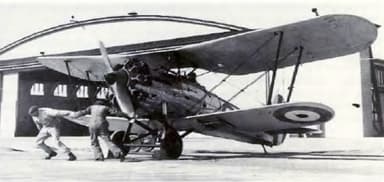
https://commons.wikimedia.org/wiki/File:Bulldog_-_Fighter_Squadron_RAAF.jpg
The specification of the Bristol Bulldog IIa was as follows:
- Length 25 ft, height 8.5 ft, wing span 33.5 ft, wing area 307 sq ft
- Empty weight 2,205 lb, max take-off weight 3,490 lb, crew one
- Bristol Jupiter VIIF 9-cylinder air-cooled radial piston engine, 490 hp
- Max speed 178 mph, ceiling 29,300 ft, two forward machine guns, four by 20 lb bombs

https://en.wikipedia.org/wiki/File:Bristol_Bulldog_3-view_Aero_Digest_November,1930.png
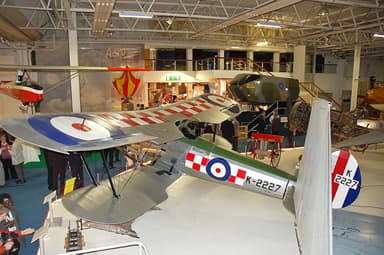
https://en.wikipedia.org/wiki/Bristol_Bulldog#/media/File:Bristol_Bulldog_REJS.jpg
JUNE 1927
Americans Charles A. Levine and Clarence Duncan Chamberlin make a record nonstop transatlantic flight in a Bellanca-Wright airplane. They travel from Long Island, New York to Eisleben, Germany, a distance of 3,911 miles in 42 hours and 31 minutes.
Canadian innovator Wallace Turnbull sells the patent for the variable-pitch propeller to Curtiss-Wright in the United States, and Bristol in the United Kingdom.
The ‘Four Continents’ flight in a series of two Savoia-Marchetti S.55 flying boats arrive in Rome, after covering 29,180 miles in 123 days.
Yugoslavia’s first civilian airline, Aeroput is founded as the flag carrier of the Kingdom of Yugoslavia. It begins flight operations in February 1928.
The Spanish airline Iberia is incorporated. Flight operations begin 6 months later.
Soviet Union Polikarpov Po-2 All-Weather Multirole Soviet Biplane
The Polikarpov Po-2 was one of the world’s most successful aircraft in terms of numbers, with as many as 30,000 manufactured in either civilian or military versions. Production continued to 1952 after the first flight on June 24, 1927. Its reliable, uncomplicated nature made it an ideal training aircraft, while also being well-suited for ground attack, aerial reconnaissance, psychological warfare, and liaison roles.
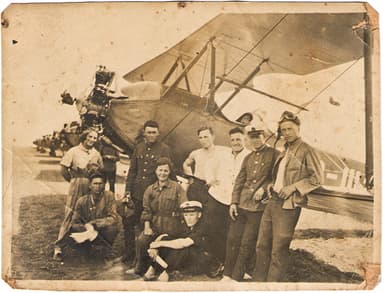
https://commons.wikimedia.org/wiki/File:Polikarpov_Po-2_(1935).jpg
The Polikarpov Po-2 was a three-cockpit biplane that was cheap to build, and very forgiving with excellent handling. It had several non-military uses initially, including ski plane, crop duster, and trainer.
However, World War II saw it really come into its own as a close-support aircraft with a 660 pound bomb load, and a rear-facing machine gun. Other versions had four 82mm rockets under their wings, or were modified for artillery correction at night. The Soviet Union ‘manned’ an entire regiment with women pilots, remembered as fearless, skillful fliers
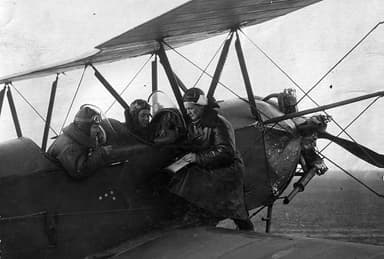
https://commons.wikimedia.org/wiki/File:Polikarpov_Po-2_antes_de_volar_en_una_misi%C3%B3n.jpg
The specification of the Polikarpov Po-2 (U2) trainer was as follows:
- Length 26.5 ft, height 10 ft, wing span 37.5 ft, wing area 357 sq ft
- Empty weight 1,698 lb, max take-off weight 2,976 lb, crew two
- One Shvetsov M-11D 5-cylinder air-cooled radial piston engine, 125 hp
- Max 94 mph, cruise 68 mph, range 390 mi, ceiling 9,800 ft, climb 547 ft / min
- One 0.30 inch Shkas machine gun, six by 110 pound bombs

https://en.wikipedia.org/wiki/Shvetsov_M-11#/media/File:Schwezow_M-11F.jpg
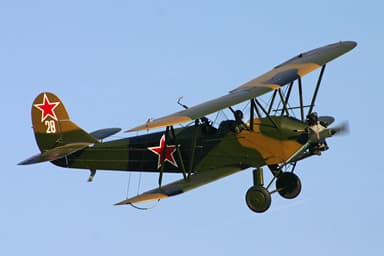
https://en.wikipedia.org/wiki/Polikarpov_Po-2#/media/File:Polikarpov_Po-2_28_(G-BSSY)_(6740751017).jpg
JULY 1927
American Lockheed Vega Five-Passenger High-Wing Monoplane
The Lockheed Vega was a small monoplane airliner, that doubled as a record-breaker on account of its rugged nature and long range. Amelia Earhart flew one when she became the first woman to fly solo across the Atlantic Ocean. Wiley Post flew around the world twice in a Lockheed Vega to prove the existence of the jet stream.
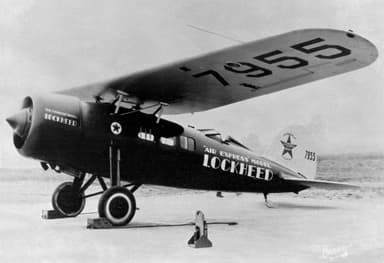
https://commons.wikimedia.org/wiki/File:Lockheed_Vega_Air_Express_NASA_GPN-2000-001390.jpg
The original Vega 1 first flew from Lockheed’s Los Angeles plant on July 4, 1927. It was capable of a fast 135 mph, although its four-passenger capacity was too light for Lockheed Airline’s original attention. However, a number of private owners were interested enough to result in quite substantial sales. Later models had additional seats.
However, what really made the Lockheed Vega stand out was its exceptional streamlining for the era. Later versions even streamlined the wheels with ‘tear drop’ housings and added NACA engine cowlings. These were developed by the National Advisory Committee for Aeronautics in 1927, and they covered installation costs many times over with fuel savings.
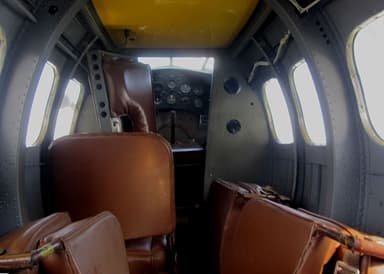
https://upload.wikimedia.org/wikipedia/commons/f/f7/Lockheed_Vega_Interior.jpg
The specification of the Lockheed Vega 5C was as follows:
- Length 27.5 ft, height 8.5 ft, wing span 41 ft, wing area 275 sq ft
- Empty weight 2,565 lb, gross weight 4,500 lb, crew one, five passengers
- Pratt & Whitney R-1340C Wasp 9-cylinder radial piston engine, 450 hp
- Max 185 mph, cruise 165 mph, range 725 mi, ceiling 19,000 ft, climb 1,300 ft / min
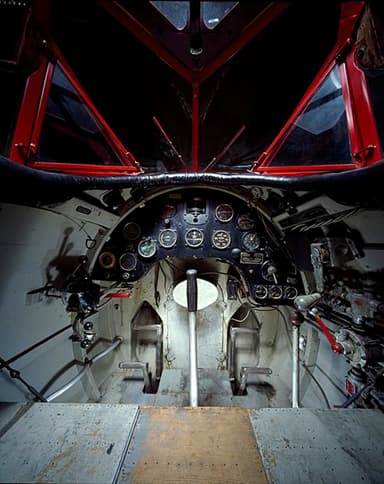
https://commons.wikimedia.org/wiki/File:Lockheed_Vega_5B,_Amelia_Earhart_-_Blick_ins_Cockpit.jpg
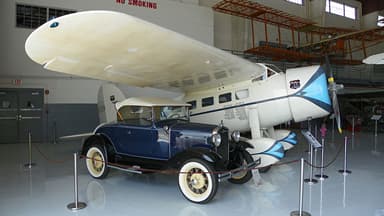
https://commons.wikimedia.org/wiki/File:Fantasy_of_Flight%27s_Lockheed_Vega.jpg
AUGUST 1927
A German Junkers K 30 sets three world records for seaplanes in a single flight. It covers 621 miles with a payload of 2,205 pounds, averages 106 mph, remains airborne for 10 hours 42 minutes, and flies a distance of 731 miles.
A KLM airline Fokker F.VIII crashes in England with 11 people on board after a structural failure in its tailfin or rudder. One crew member dies and eight others are injured while two escape unharmed.
SEPTEMBER 1927
The first commercial flight in the United States departs Concord, California using a Boeing 40-B2, and lands in New York 32 hours later, transporting two passengers with mail and other cargo.
United Kingdom Flight Lieutenant S. N. Webster takes the 1927 Schneider Trophy in a Supermarine S.5 at an average speed of 281 mph.
South African Lieutenant Dick Bently departs London in a de Havilland 60X Moth for Cape Town. He completes the first solo flight on that route in 27 days.
OCTOBER 1927
French aviators Dieudonné Costes and Joseph Le Brix depart Paris as they begin a flight around the world in their Breguet 19 G.R. Nungesser-Coli. They will complete the trip on April 14, 1928.
Pan American Airways launches its first scheduled international air service, a 70-minute flight from Key West, Florida, to Havana, Cuba
American Curtiss XO-1 Forerunner of Curtiss Falcon
The Curtiss XO-1 was the prototype of the family of Curtiss fighter-bomber aircraft. It sold primarily to the United States Army Air Corps, United States Navy, and United States Marine Corps, and was only finally retired in 1937. The initial order was placed in the winter of 1927, and the first plane was delivered that October.
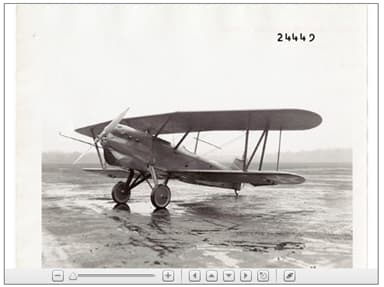
https://corescholar.libraries.wright.edu/special_ms223_photographs/121/
The Curtiss XO-1 was a conventional unequal-span biplane design with wooden wings, while the fuselage was built using aluminum tubing with steel tie rod bracing. It was reasonably successful as its original intention as observation aircraft, although most of the 488 Curtiss Falcons saw service in fighter / bomber roles.
The aircraft became quite well known in the popular mind after featuring in multiple Hollywood movies. In fact, it was the aircraft that ‘shot’ King Kong off the top of the Empire State building. On a more serious note, Curtiss Falcons saw active service in several South American conflicts, including the Brazil Constitutionalist Revolution of 1932.
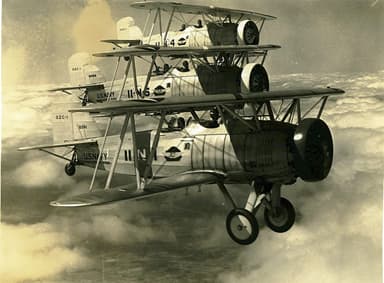
https://en.wikipedia.org/wiki/File:Curtiss_F8C-5_Formation,_circa_1930.jpg
The specification of the Curtiss Falcon Model 37H (A-3B) was as follows:
- Length 27.5 ft, height 10 ft, wing span 38 ft, wing area 351 sq ft
- Empty weight 2,902 lb, gross weight 4,476 lb, crew two
- Curtiss D-12E (V-1150-5) V-12 liquid-cooled piston engine, 426 hp
- Max 139 mph, cruise 111 mph, range 647 mi, ceiling 14,400 ft, climb 984 ft / min
- Four forward-firing 0.300 inch M1919 Browning machine guns
- Two flexible 0.300 inch Lewis guns on a Scarff ring in the rear cockpit.
- Two hundred pound weight of bombs mounted on lower wing racks.

https://commons.wikimedia.org/wiki/File:118th_Observation_Squadron_-_Curtiss_XI-12_Falcon.jpg
NOVEMBER 1927
Italian Mario de Bernardi sets a new world airspeed record of 297 mph in a Macchi M.52.
Sir Alan Cobham sets out from England in a Short Singapore to make an aerial survey of Africa.
French Farman F.180 Large Biplane Passenger Airliner
Farman’s original intention was to use the Farman F.180 to introduce the first non-stop passenger service between Paris and New York. This was a bold initiative in the same year as Charles Lindberg, and then Amelia Earhart met that challenge independently. However, for some reason Farman abandoned that dream, but the bold aircraft lived on.
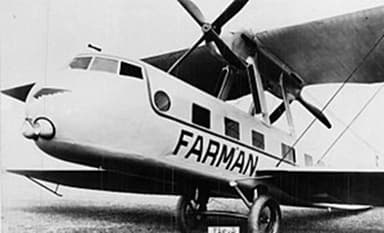
https://en.wikipedia.org/wiki/File:Farman_F.180_left_front_photo_NACA_Aircraft_Circular_No.88.jpg
Farman deployed the three aircraft it built to its own airline instead. This was fo luxury air transport between Paris and nearby European capital cities, after the first successful flight in November, 1927. The design of the unequal-span, two-bay parasol airplane was remarkable for 1927, and introduced several new innovations.
The fuselage cross-section was oval and it even mounted two landing lights. The crew enjoyed the luxury of an enclosed cockpit with decidedly modern-looking windows, while the eighteen passengers relaxed in what was sheer luxury for the day.
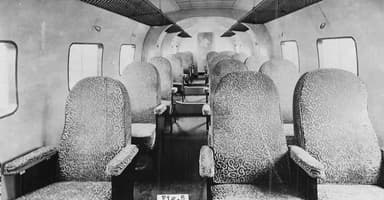
https://commons.wikimedia.org/wiki/File:Farman_F.180_cabin_photo_NACA_Aircraft_Circular_No.88.jpg
The specification of the Farman F.180 was as follows:
- Length 59 ft, height 19 ft, wing span 85 ft, wing area 1,851 sq ft
- Empty 9,921 lb, gross 17,637 lb, crew two, twenty-four passengers
- Two Farman 12 We W-12 push-pull piston engines, 500 hp each
- Max speed 118 mph, range 621 mi, service ceiling 13,125 ft
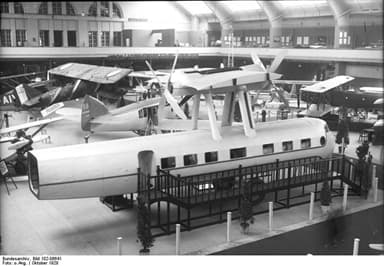
https://upload.wikimedia.org/wikipedia/commons/4/47/Bundesarchiv_Bild_102-06641%2C_Luftfahrtausstellung%2C_Farman-Gross-Flugzeug.jpg
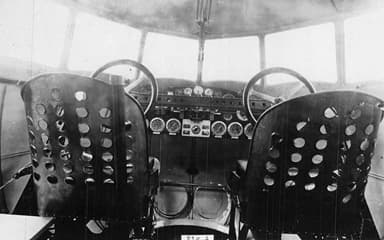
https://commons.wikimedia.org/wiki/File:Farman_F.180_cockpit_photo_NACA_Aircraft_Circular_No.88.jpg
British Westland Wizard High Speed Monoplane Fighter
The Westland Wizard was a superb aircraft for its day, by all accounts. The fact it failed to unhorse the Royal Air Force’s preference for chunky biplanes did nothing to diminish this. The privately-funded purpose to pursue high speed as primary goal succeeded, and it left its mark on British World War II fighter design.

https://en.wikipedia.org/wiki/File:Westland_Wizard.jpg
The Westland Wizard began life as the Westland Racer the company’s designers tinkered with in their spare time. It was a parasol monoplane of mixed construction, with a duralumin and steel-tube forward fuselage covered with metal and fabric skinning, and a wood and fabric rear fuselage with wooden wing.
The Racer was rebuilt as the Westland Wizard after a crash landing The fuel tanks were incorporated in the chunky wing, with gravity feed to the engine reducing fire risks. The dual cockpit was approximately in line with the trailing wing, with the pilot’s seat positioned to afford a view either over, or under it.
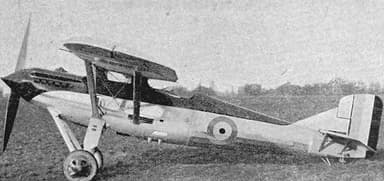
https://commons.wikimedia.org/wiki/File:Westland_Wizard_L%27Ann%C3%A9e_a%C3%A9ronautique,1928.jpg
The specification for the Westland Wizard was as follows:
- Length 27 ft, height 9.5 ft, wing span 39.5 ft, wing area 238 sq ft
- Empty weight 2,467 lb, gross weight 3,326 lb, crew two
- Rolls-Royce F.XI V-12 liquid-cooled piston engine, 490 hp
- Max speed 188 mph, ceiling 17,500 ft, climb 1,945 ft / min
- Two Vickers machine guns, four by twenty-pound bomb load

https://en.wikipedia.org/wiki/Westland_Wizard#/media/File:Westland_Wizard_3-View_L’Air_January_1,1929.png
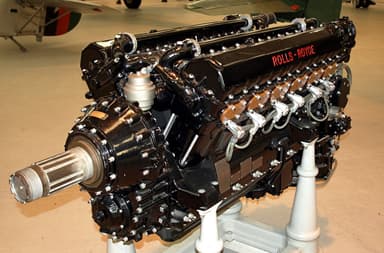
https://en.wikipedia.org/wiki/Rolls-Royce_Kestrel#/media/File:RRKestrelXVI.JPG
DECEMBER 1927
Spanish airline Iberia begins flight operations using a fleet of three Rohrbach Roland monoplanes purchased from Deutsche Luft Hansa.
The prototype Latécoère 23 flying boat spins into the ground on approach to landing, killing all five people on board. No more Latécoère 23 aircraft are built.
Japanese Nakajima A1N Carrier Based Aircraft
The Nakajima A1N was a clone of the British Gloster Gamecock, built under license by Nakajima Aircraft Company for the Imperial Japanese Navy. Some 151 were built after the first flight on December 12, 1928, and they remained in service as replacement for the Mitsubishi 1MF (Type 10) fighters through to 1935.

https://commons.wikimedia.org/wiki/File:Nakajima_A1N.jpg
The Nakajima A1N was a single-seat, single-bay all-wooden biplane, with a Bristol Jupiter air-cooled radial engine radial engine as per the Gloster Gamecock specification. However, Nakajima Aircraft Company fitted it with longer-span wings, and internal flotation bags and arrestor hooks for carrier operations.
There was also an improved version, the Nakajima A1N2 powered by the 450 hp Nakajima Kotobuki 2 radial piston engine. The aircraft saw action during the Shanghai Incident in 1932 between Japan and China, when they shot down a Boeing P-12 and a Junkers K 47.
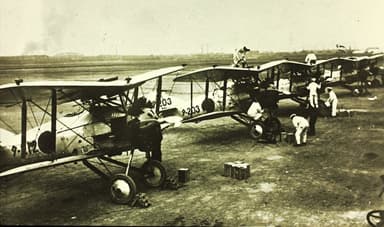
https://commons.wikimedia.org/wiki/File:Nakajima,_A1N.jpg
The specification of the Nakajima A1N2 was as follows:
- Length 21.5 ft, height 10.5 ft. wing span 31.5 ft, wing area 283 sq ft
- Empty weight 1,944 lb, max take-off weight 3,031 lb, crew one
- Nakajima Kotobuki 2 9-cylinder air-cooled radial piston engine, 451 hp
- Max 150 mph, cruise 92 mph, range 230 mi, ceiling 23,000 ft, climb 9,800 ft / 6 min
- Two fixed, forward-firing 0.303 inch machine guns, two by 66 lb bombs

https://en.wikipedia.org/wiki/Nakajima_Kotobuki#/media/File:BristolJupiter.JPG
American Buhl Airsedan Civil Cabin Aircraft
The Buhl Airsedan was a family of American civil sesquiplane aircraft, developed and manufactured by the Buhl Aircraft Company in the late 1920s, after prototyping in 1927. There were four different models, the CA-3, 5, 6, and 8 which indicated the number of seats in the airplane including the pilot.
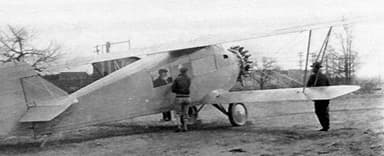
https://en.wikipedia.org/wiki/File:Unmarked_Buhl_CA-5_Airsedan_prototype_(cropped).jpg
The Buhl Airsedan series fuselages, lower sesquiplane wings, and lower tail assemblies were welded steel tubes faired with wooden battens, with the former integral with the main structure. The upper wings were assembled from wooden spruce spars. The entire air frame was covered with doped aircraft-grade fabric.
Over and above its popular civilian use, the Airsedan won first place in the Oakland-Cleveland Air Derby during the 1929 National Air Races. It also set a world endurance record of 246 hours using inflight refueling. However, the model is perhaps best remembered for a non-stop return flight across the United States, taking five days and again using inflight refueling.

https://commons.wikimedia.org/wiki/File:Buhl_CA-5_Air_Sedan_NR3763_The_Angeleno_in_flight.jpg
The specification of the Airsedan Model CA-6 was as follows:
- Length 29.5 ft, height 8.5 ft, upper wing span 40 ft, wing area 315 sq ft
- Empty weight 2,478 lb, gross weight 4,200 lb, crew one, five passengers
- Wright J-6-9 Whirlwind air cooled 9 cylinder radial engine, 300 hp
- Max 140 mph, cruise 120 mph, range 720 mi, ceiling 17,000 ft, climb 900 ft / min
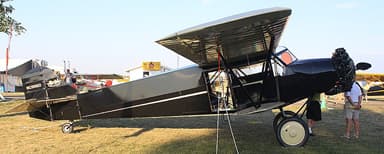
https://commons.wikimedia.org/wiki/File:Buhl_CA-3C_(N5860)_(cropped).jpg

https://www.flickr.com/photos/wbaiv/12851465714
https://en.wikipedia.org/wiki/Buhl_Airsedan#Design_and_development





